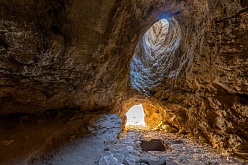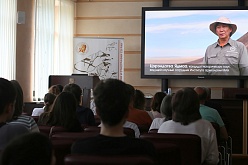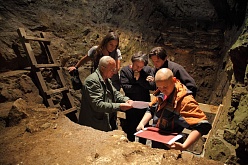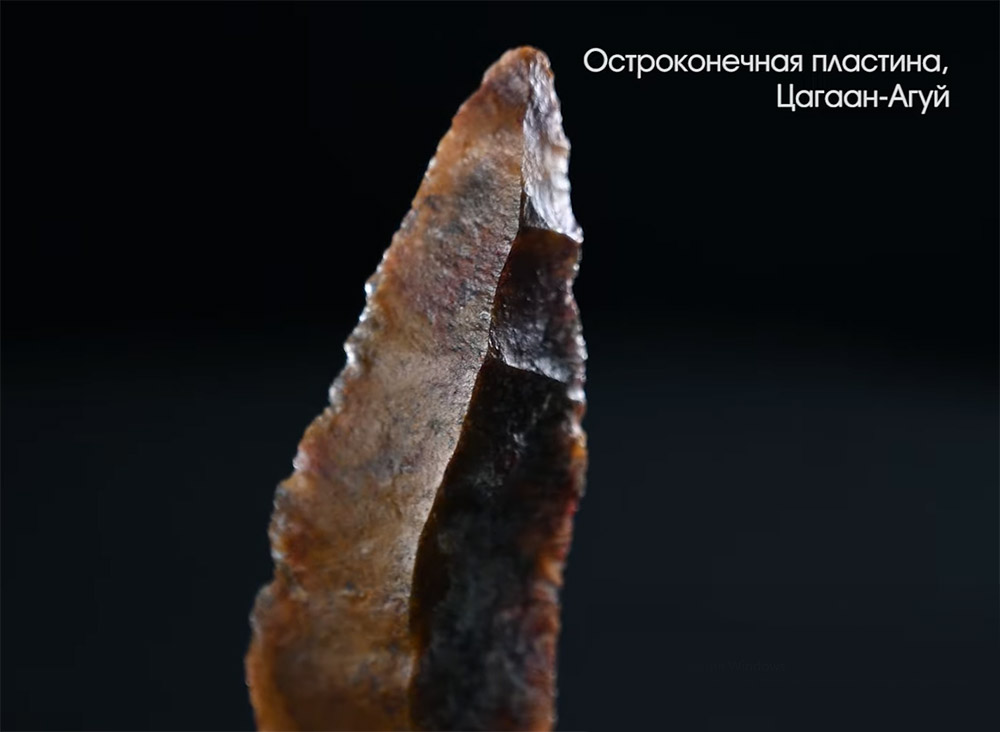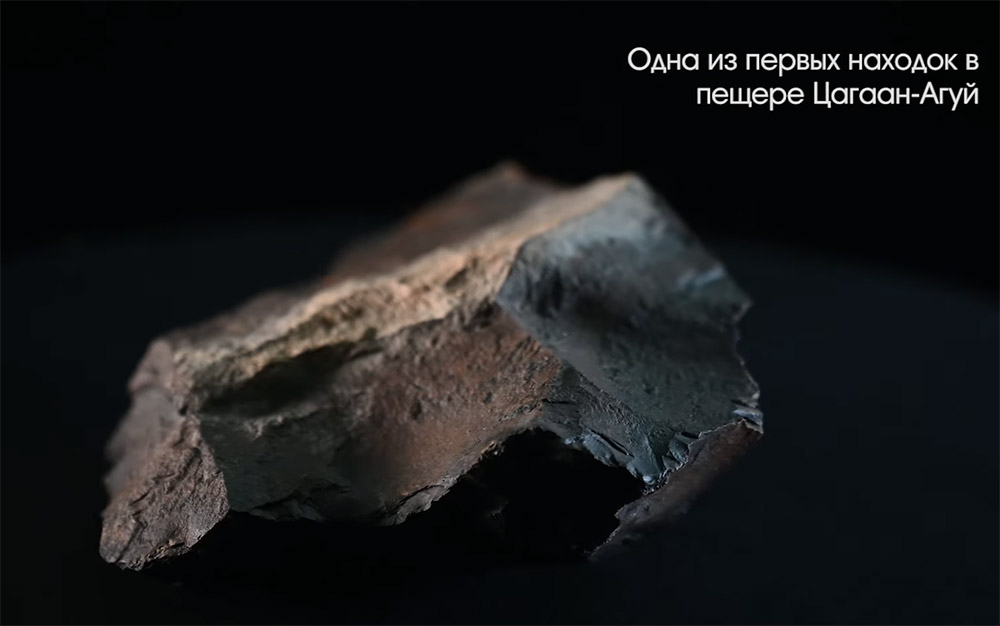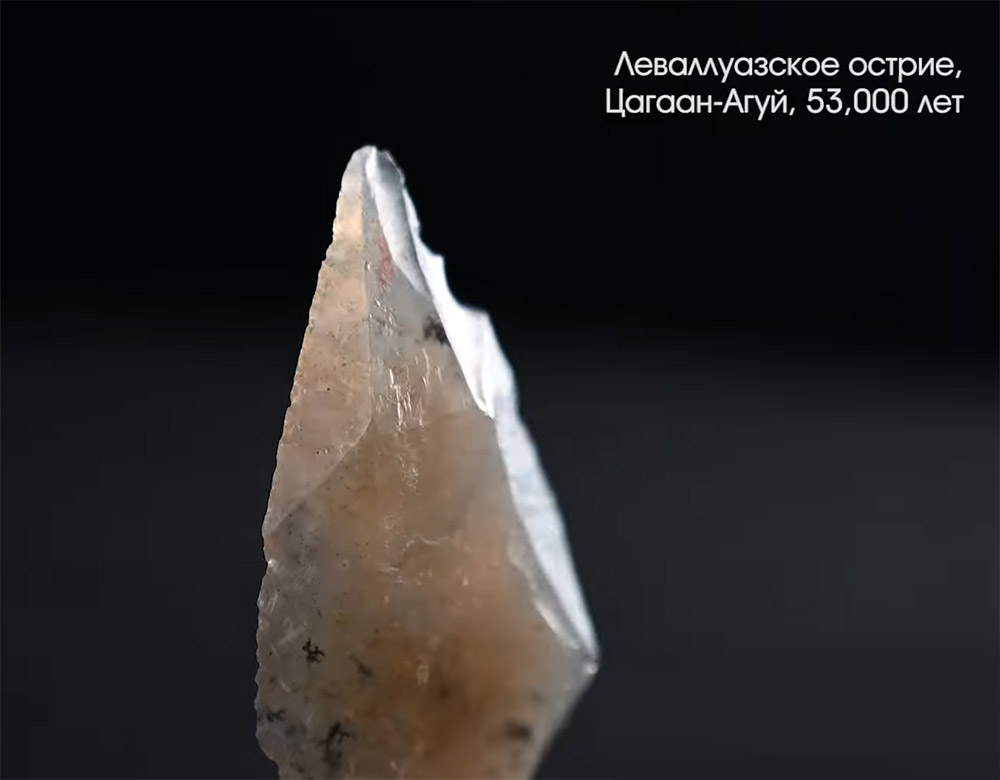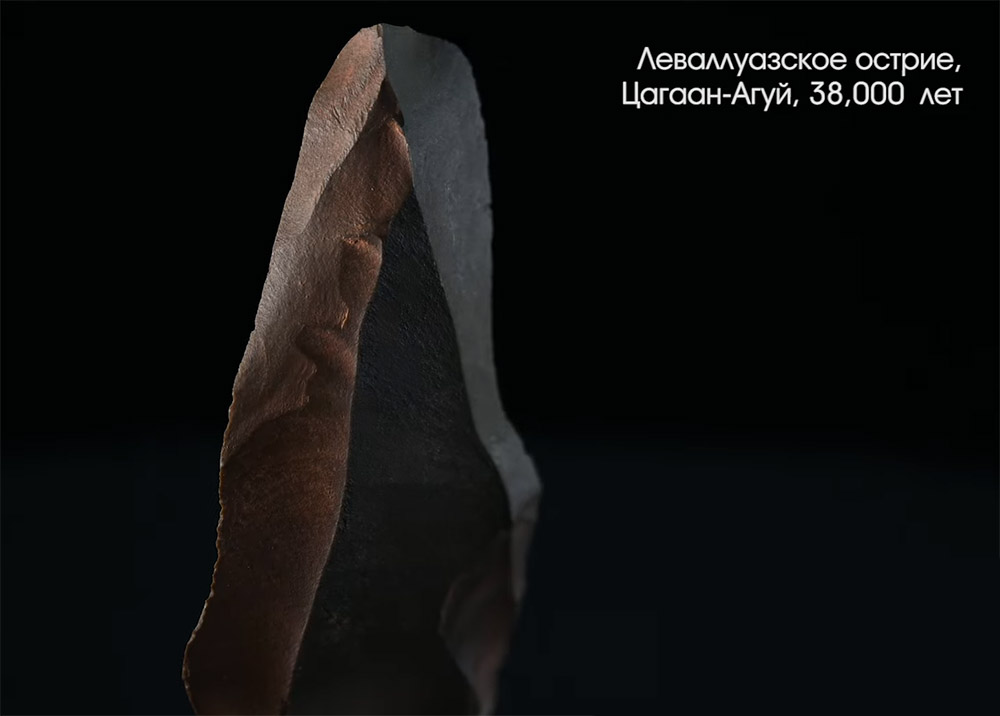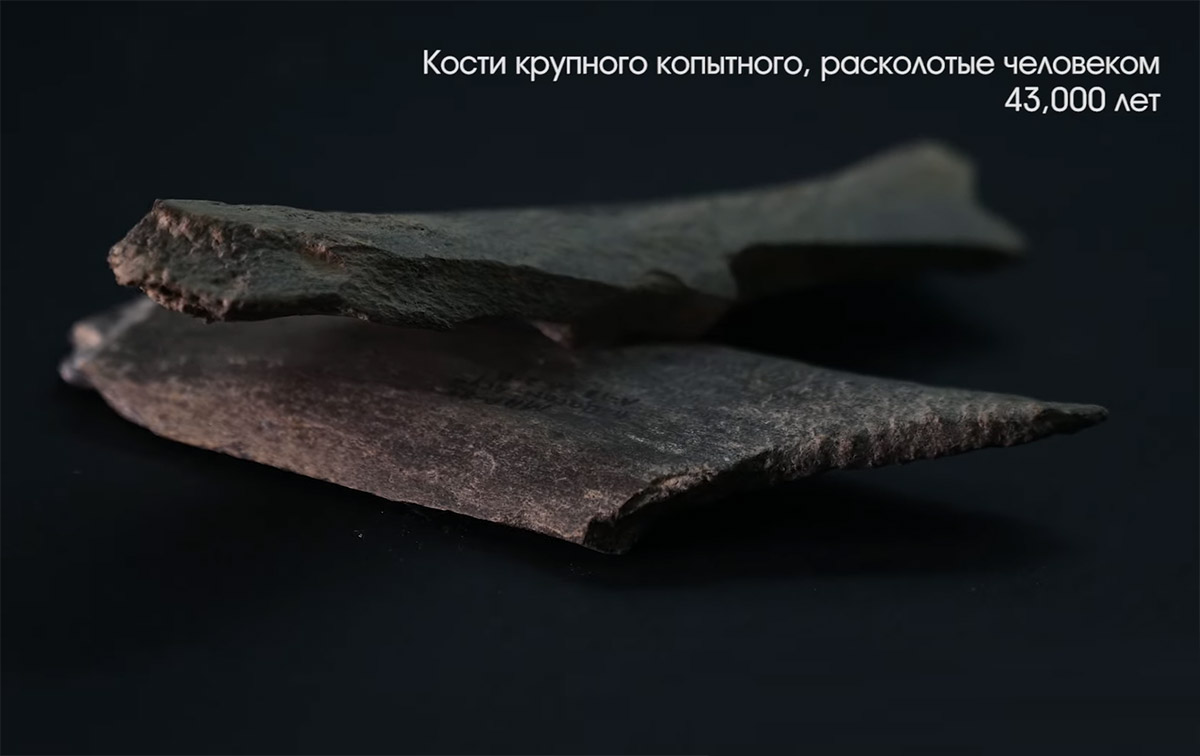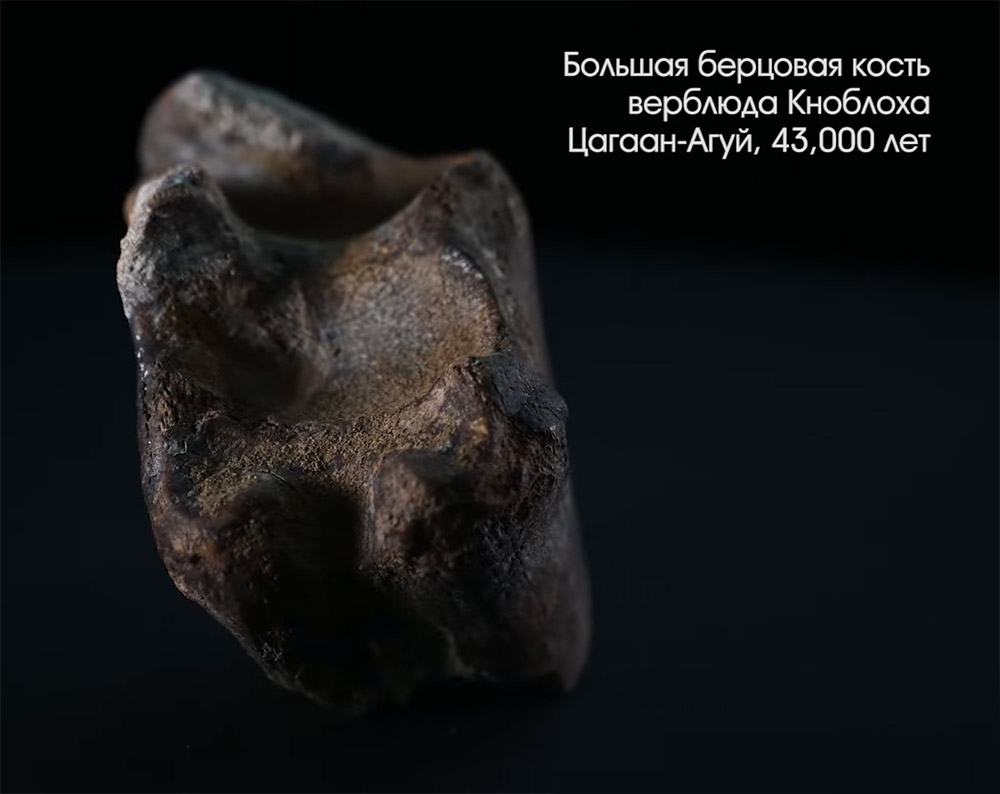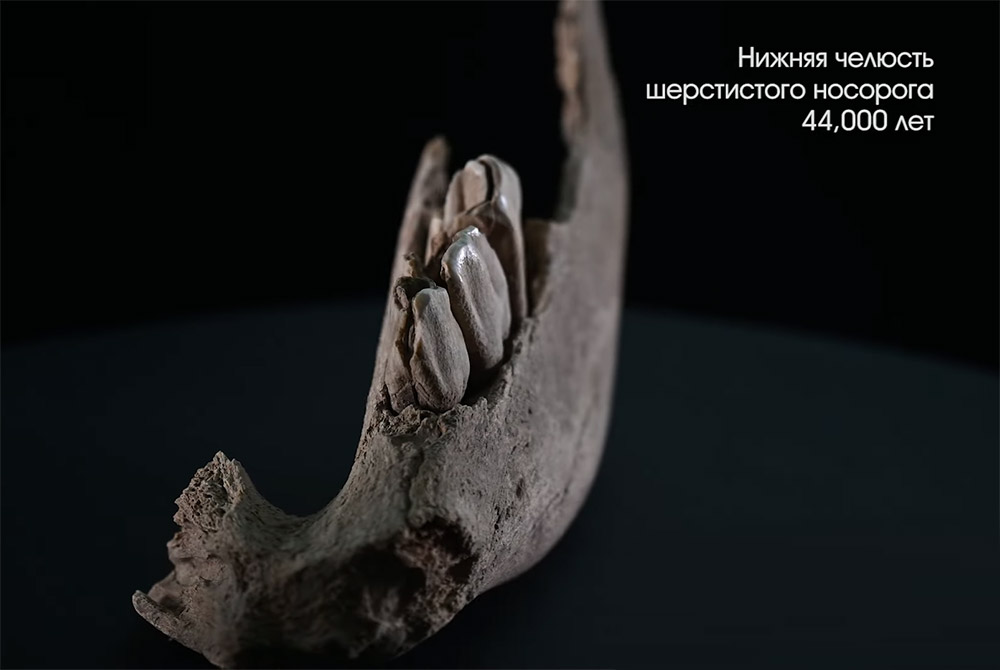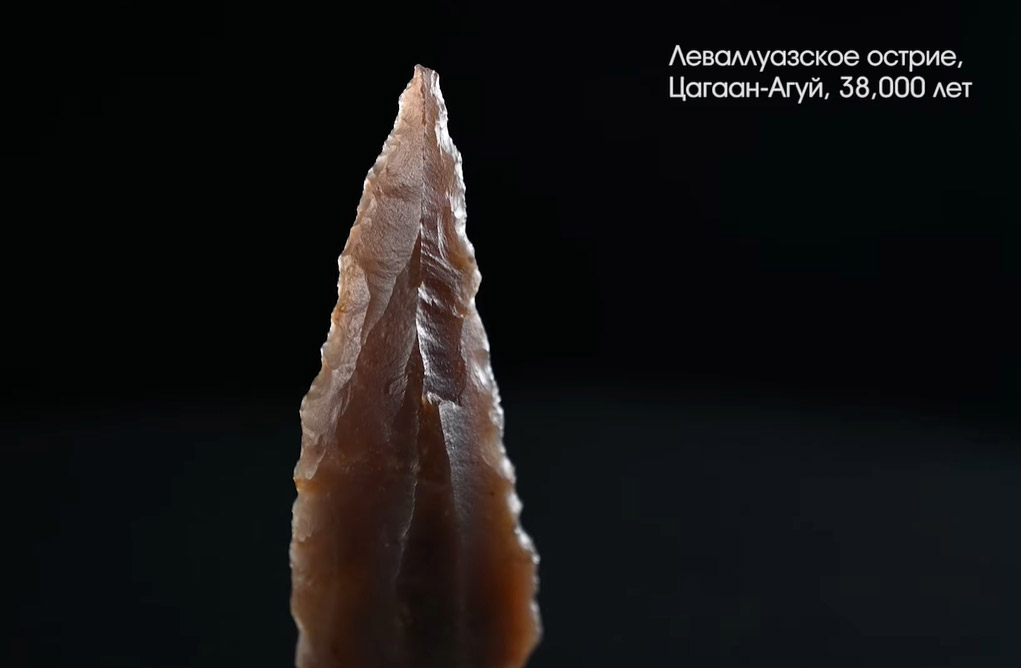Tsagaan Agui Cave
- Description
- Links
- Video
Tsagaan Agui Cave, also known as the White Cave, is the only cave in Mongolia and Northern China where we have the opportunity to study ancient human culture dating back from 500 to 20 thousand years before present. Early bone and stone products and soft semi-precious rock items, as well as remains of extinct fauna have been discovered there. These findings have significantly reshaped our understanding of Pleistocene animals and the factors contributing to their extinction.
The Cave provides researchers with insights into ancient humans, shedding the light on how they successfully adapted to the challenging alpine desert environment hundreds of thousands of years ago.
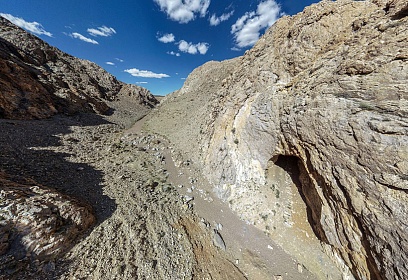
Location: Mongolia, Bayankhongor aimak
The archeological studies began in:: The cave was first discovered in 1972 by D. Dorj, a Mongolian archeologist; first studied by A.P. Derevianko, D. Dorj, and D. Tseveendorj in 1987-1989.
Estimated layers age: 500 ka to the Middle Ages
Human species: Unknown
Study history
The systematic study of the site began between 1987 and 1989 by a Joint Soviet-Mongolian Historical and Cultural Expedition, which was led by A.P. Derevianko and D. Dorj. During this period, the initial excavations were conducted in both the Pre-Entrance area and the Entrance grotto.
The commencement of a new phase of research was associated with the establishment of the International Russian-Mongolian-American Joint Expedition in 1995, which was organized by the Institute of Archeology and Ethnography of the Siberian branch of the Russian Academy of Sciences (Academician A.P. Derevianko), the Institute of Archeology of the Mongolian Academy of Sciences (Academician D. Tseveendorj), and the University of Arizona (Prof. G.W. Olsen). The Lower, Great, and Small grottoes had been studied for 6 years. The tripartite expedition renewed its activities in 2021 under the leadership of A.M. Khatsenovich (Russia), D. Bazargur (Mongolia), and G. W. Olsen (USA).
The application of advanced techniques, such as 3D modeling, mass spectrometry, ancient DNA sequencing, analysis of material isotope composition, and others, has significantly improved the quality of study of the Stone Age people culture in relation to the environment and climatic characteristics.
The most well-known finds are:
Remains of extinct megafauna, early stone products, soft semi-precious rock items, fragments of birch bark with inscriptions in the Old Mongolian language.
-
First Documented Camelus knoblochi Nehring (1901) and Fossil Camelus ferus Przewalski (1878) From Late Pleistocene Archaeological Contexts in Mongolia. Frontiers in Earth Science. 2022
-
2022 Investigations of Tsagaan Agui Cave in the Gobi Altai. Problems of Archaeology, Ethnography, Anthropology of Siberia and Neighboring Territories. 2022 (In Russ.)
-
Preliminary Results of the 2021 Excavation Campaign at Tsagaan Agui Cave in the Gobi Altai Region, Mongolia. Problems of Archaeology, Ethnography, Anthropology of Siberia and Neighboring Territories. 2021 (In Russ.)
-
Holocene Archaeological Material from Tsagaan Agui Cave Recovered During the 2021 Excavation Campaign. Problems of Archaeology, Ethnography, Anthropology of Siberia and Neighboring Territories. 2021 (In Russ.)


